I once was an avid trout fisherman, but for various reasons I hadn't actually gone fishing at all after we moved from Montana to Washington some 23 years ago. Recently, something strange happened to my digestion, liver tests were mildly alarming. The Doctor suggested cutting back on drinking alcohol, which I gladly would have done had I been drinking any alcohol. Other than a sip at the Lord's Supper, I haven't had anything since 2010, because I only would drink wine I make and I had not gotten my grapes producing yet.
The short story: turns out I can eat fish and eggs without any problems. Both seem to be helpful for healing. I promptly got a fishing license and started fishing.
I caught lots of trout in a short time--around 20. I started freezing them, but I didn't like the complexity of thawing one for a daily meal. "What about canning?" I thought.
Sure enough, the instructions that came with our All American Pressure Canner had instructions for fish. The USDA, state extension, and our instructions all said the same thing. You pressure can them under a 10 psi setting for 110 minutes. Bones dissolve in the process.
So here, in pictures, is a summary of today's canning....
Start with some fish. Here are some trout I caught last night and this morning in a local pond. (I've also canned crappies in exactly the same way, and they turned out very well.)
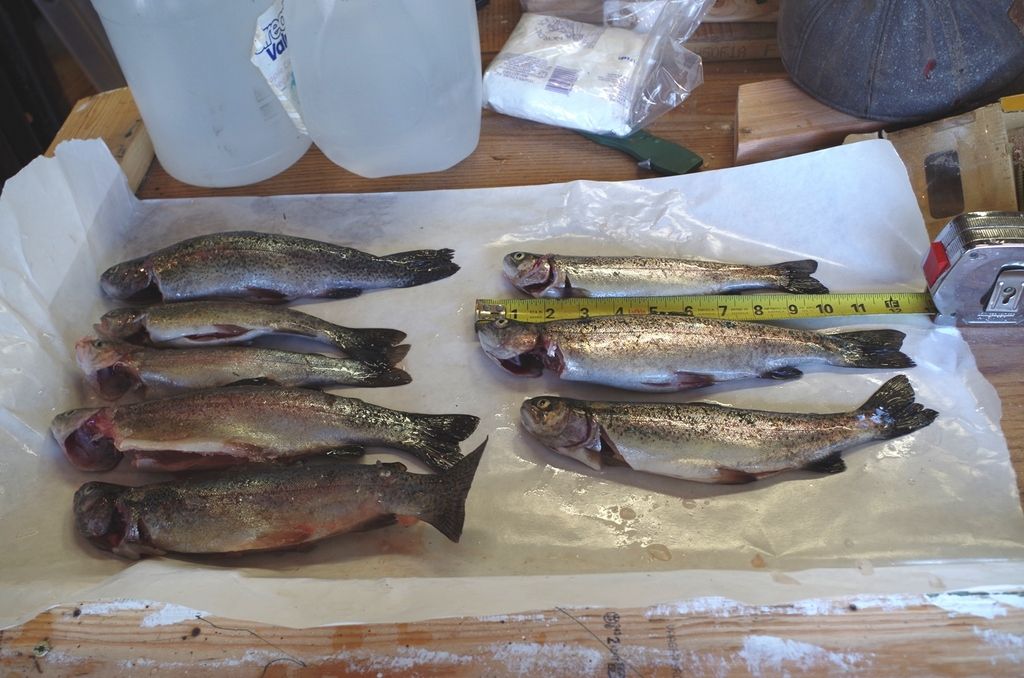
Next you cut off the head and tails, trim off larger fins, and cut into pieces.
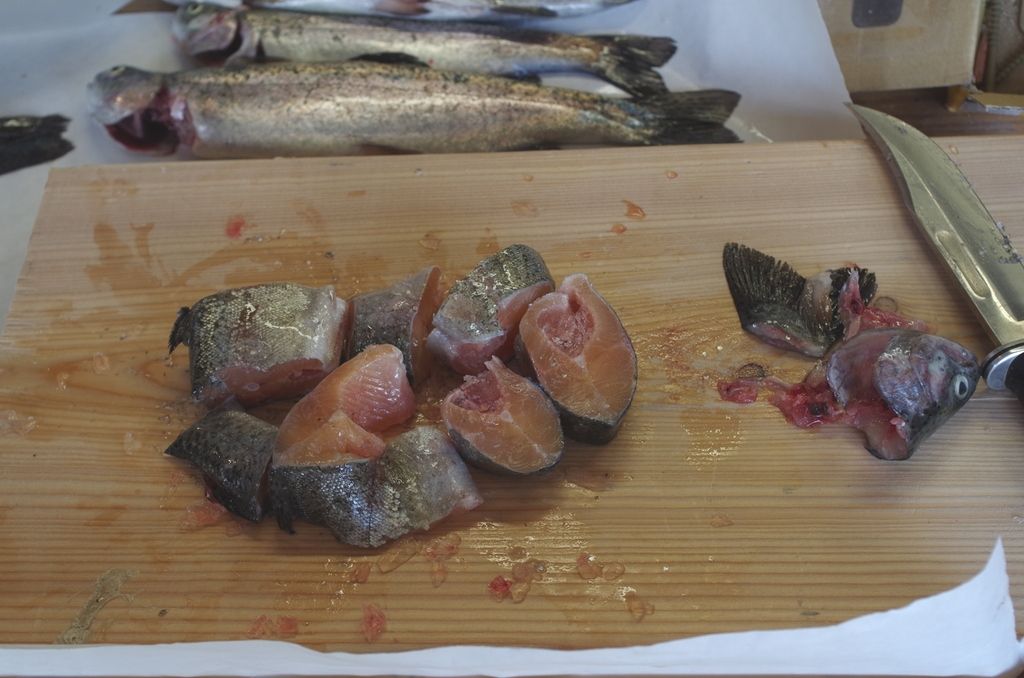
Pack into jars. I used pint jars here and one large and one small trout seem to fit the best per jar. I have used quart jars, but that is a larger amount to eat. Canned fish seems to keep well enough in the fridge for 3 days after opening. I'd rather not push it more than that.
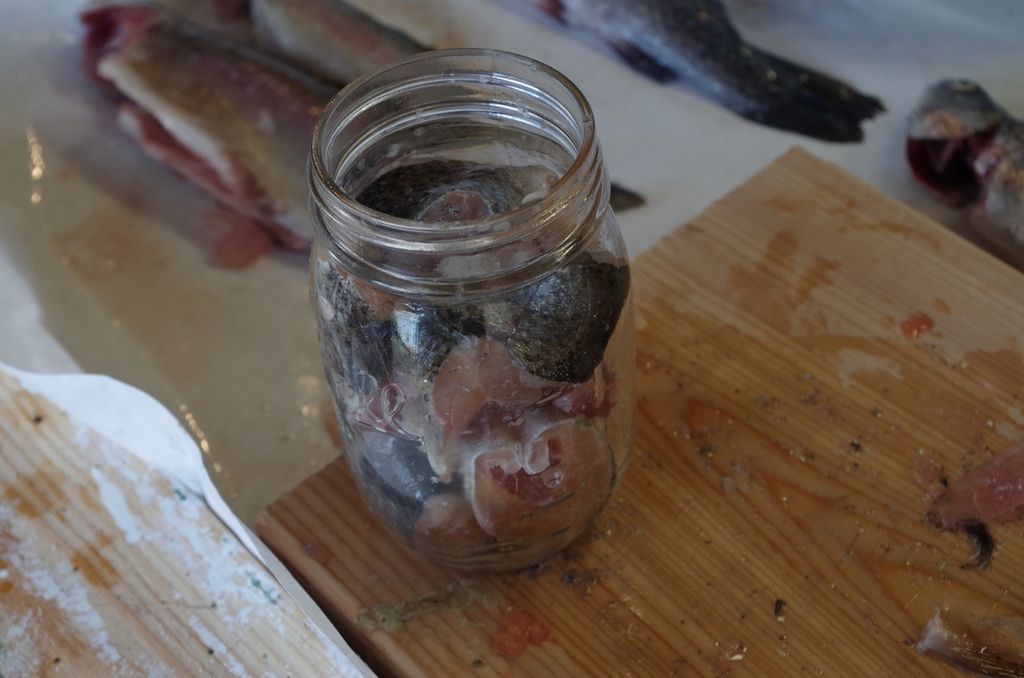
Add about a 1/2 tablespoon of salt per pint jar.
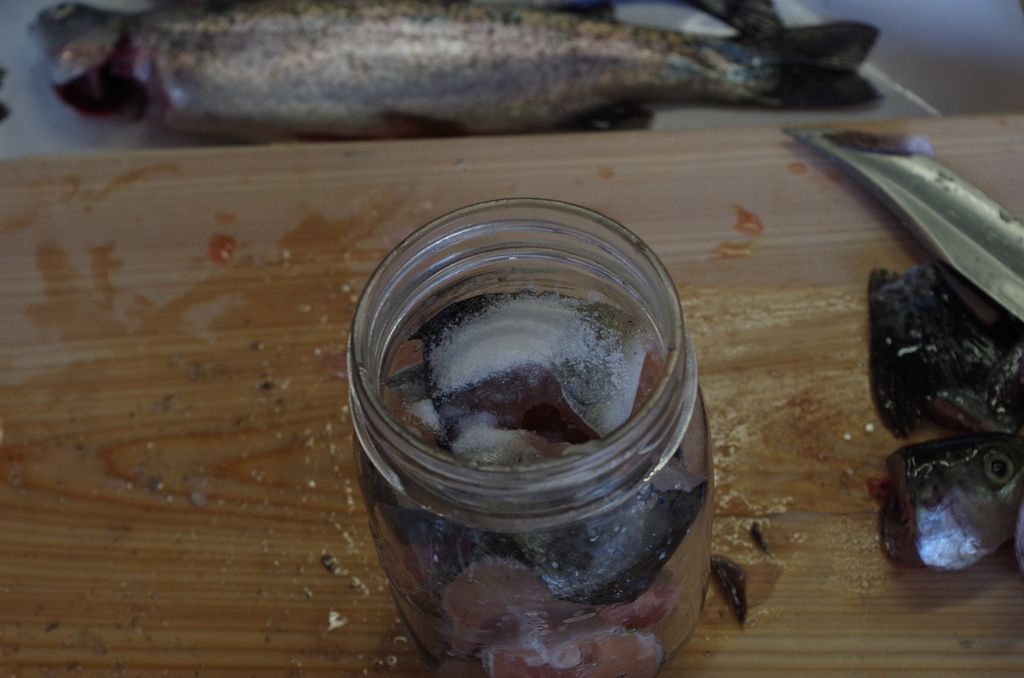
Here I filled 4 jars with the eight fish. Note the approximately 1 inch headspace.
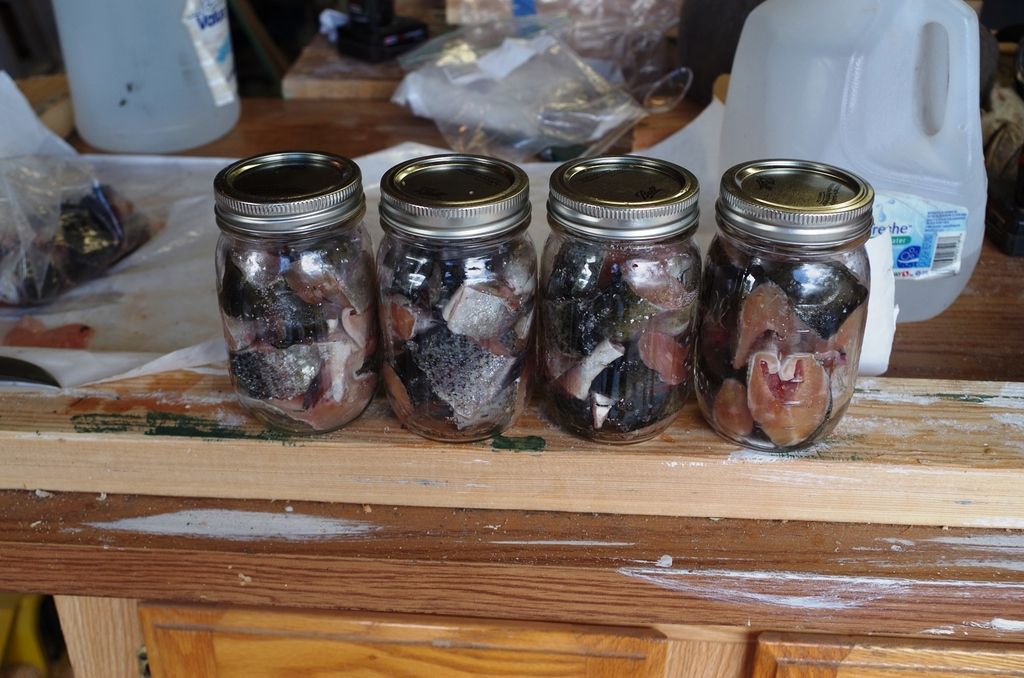
Put into the pressure canner.
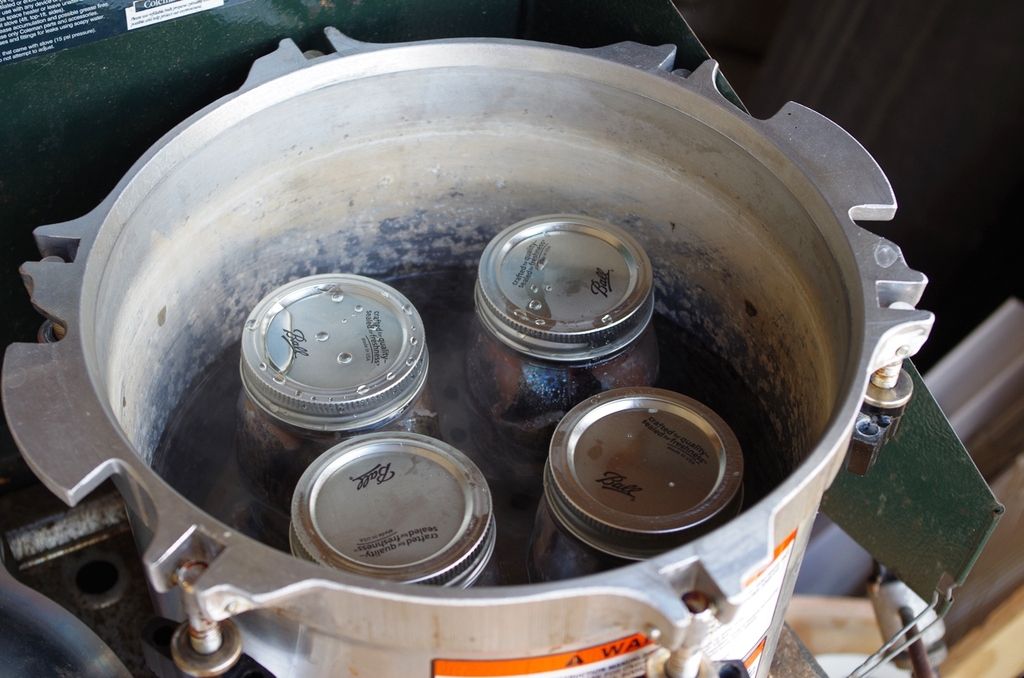
Make sure there is enough water. I fill it around 3 inches. Turn on the heat until it starts to boil, cover and crank down the lid so it is level and sealed.
And then vent for 10 minutes.
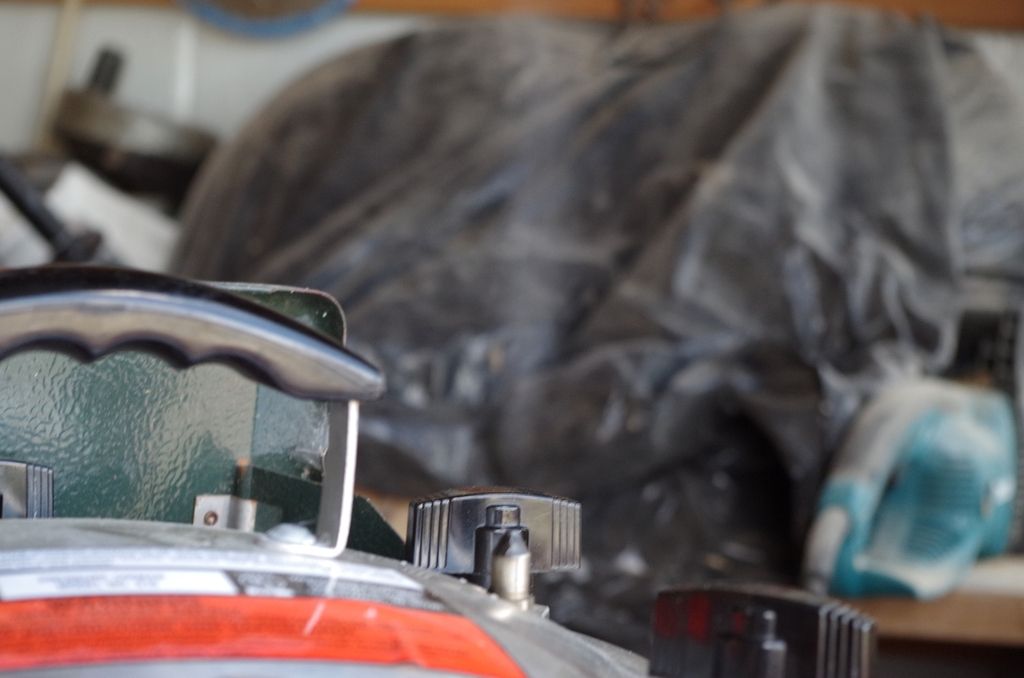
Once it has vented, add the weight for the proper pressure. I used the 10 pound weight based upon our altitude as directed.
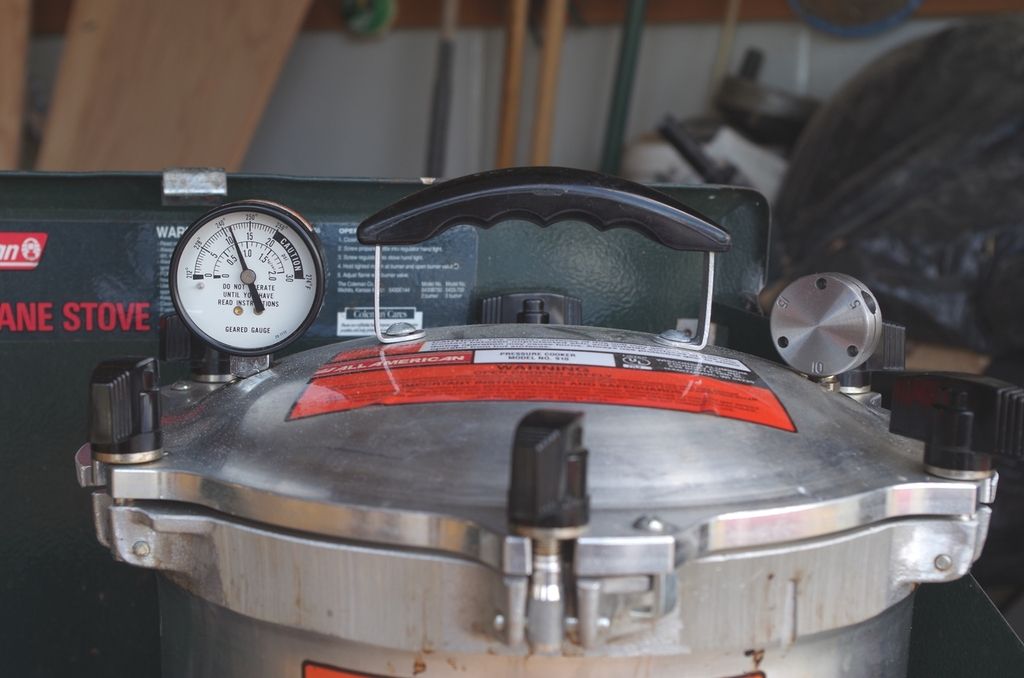
Once the canner reaches the correct pressure, start timing. I followed the 110 minutes stated by the instructions and the USDA.
After the 110 minutes have passed, turn off the heat and let sit until pressure drops to zero. Remove the weight, unlock the lid, and take the jars out (hot! I use a jar holder). As they sit, you should hear the tell-tale "pop" of the lids as they cool. Mine all popped within 3 or 4 minutes.
Now you have preserved fish:
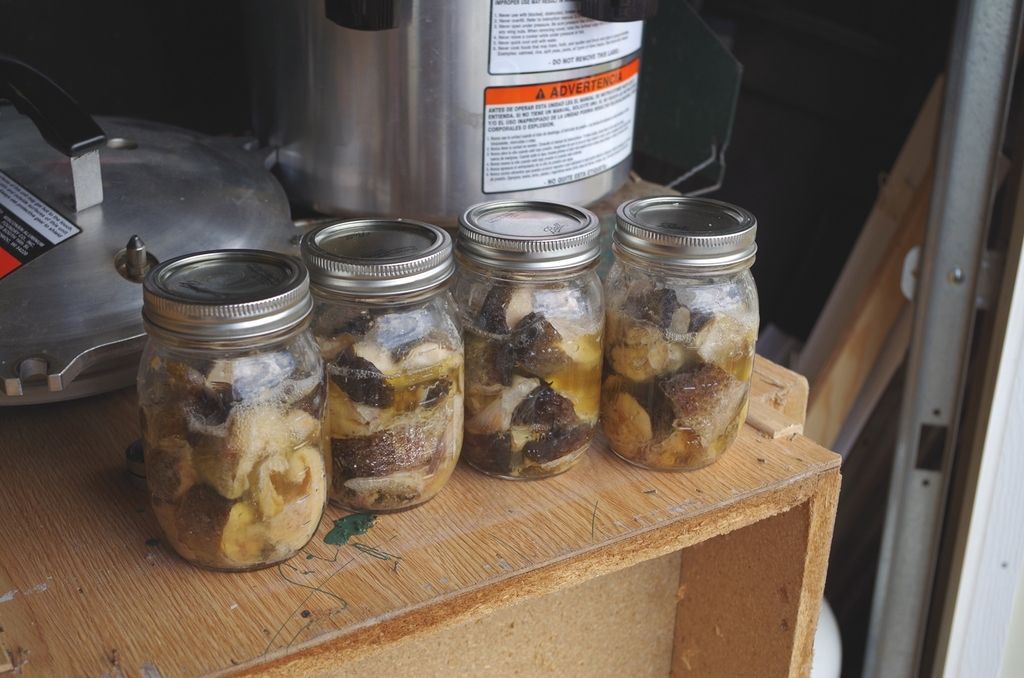
The end result is quite good, I think. Mild flaky trout on crackers is now my mainstay lunch.
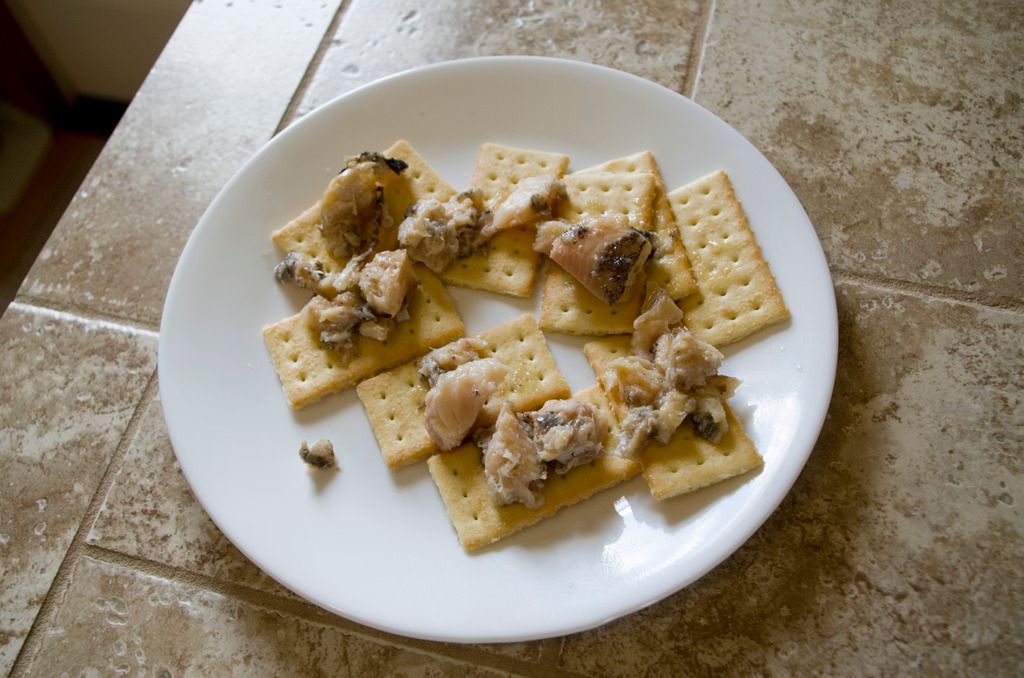
The short story: turns out I can eat fish and eggs without any problems. Both seem to be helpful for healing. I promptly got a fishing license and started fishing.
I caught lots of trout in a short time--around 20. I started freezing them, but I didn't like the complexity of thawing one for a daily meal. "What about canning?" I thought.
Sure enough, the instructions that came with our All American Pressure Canner had instructions for fish. The USDA, state extension, and our instructions all said the same thing. You pressure can them under a 10 psi setting for 110 minutes. Bones dissolve in the process.
So here, in pictures, is a summary of today's canning....
Start with some fish. Here are some trout I caught last night and this morning in a local pond. (I've also canned crappies in exactly the same way, and they turned out very well.)

Next you cut off the head and tails, trim off larger fins, and cut into pieces.

Pack into jars. I used pint jars here and one large and one small trout seem to fit the best per jar. I have used quart jars, but that is a larger amount to eat. Canned fish seems to keep well enough in the fridge for 3 days after opening. I'd rather not push it more than that.

Add about a 1/2 tablespoon of salt per pint jar.

Here I filled 4 jars with the eight fish. Note the approximately 1 inch headspace.

Put into the pressure canner.

Make sure there is enough water. I fill it around 3 inches. Turn on the heat until it starts to boil, cover and crank down the lid so it is level and sealed.
And then vent for 10 minutes.

Once it has vented, add the weight for the proper pressure. I used the 10 pound weight based upon our altitude as directed.

Once the canner reaches the correct pressure, start timing. I followed the 110 minutes stated by the instructions and the USDA.
After the 110 minutes have passed, turn off the heat and let sit until pressure drops to zero. Remove the weight, unlock the lid, and take the jars out (hot! I use a jar holder). As they sit, you should hear the tell-tale "pop" of the lids as they cool. Mine all popped within 3 or 4 minutes.
Now you have preserved fish:

The end result is quite good, I think. Mild flaky trout on crackers is now my mainstay lunch.

